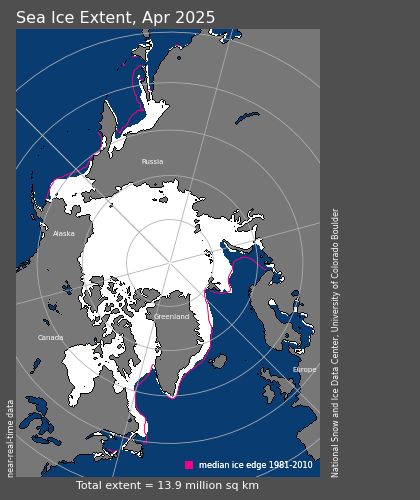Modelling the impacts of Black Carbon (BC) is in abundance in academic geography. However, only recently has Black Carbon begun to be incorporated into studies modelling climate change (ie. ice sea ice retreat) within the Arctic. Either models have advanced (and details such as BC can be accounted for) or black carbon has just been established as contributor to climate change in the Arctic, I do not know. This post sums up my series on black carbon as a form of long range pollution and aims to discuss the presence of black carbon in modelling studies by comparing two studies.
Published in 1995, Cattle
and Crossley, discuss the basic predictions of climate change in the Arctic
region. The model adopted is that used by the Hadley centre for climate
prediction and research at the meteorological office, to model the impacts of
future climate change resulting from increased concentrations of greenhouse
gases. It is important to remember climate change did not become a global phenomenon
till the late 20th so this knowledge was quite new at this time. The
results suggested a temperature change by approximately 2 degree centigrade by 2030
(this is based on Greenland predictions but generally results varied very
little), thus causing a thinning of ice and a maximum ice thicknesses of 3m
in March and 2m in September (within the central Arctic).
This seems to be a very large
underestimate of what has occurred over the past 10 or so years. Currently, 4
years before the predicted temperature rise, parts of the Arctic are witnessing
temperature rises of 2-3
degrees PER DECADE! So by 2030 this temperature change will be well above
what the model simulations in Castle and Crossley's study. This gap between predicted and observed results
could have resulted from a lack of consideration of the albedo feedback systems
created by black carbon. Having said this it is unlikely black carbon could be
able to single handedly cause an accelerated rate of sea ice retreat. Graversen
et al (2008) suggest black carbon and the resulting change to albedo could
contribute to the warming when associated with warming of the middle troposphere
(as a result of an advection of energy bringing warmer air into the Arctic
region).
 |
| Map showing sea ice retreat. |
In order to accurately predict abrupt sea ice retreat,
anthropogenic forcing, such as the influence of particulates, must
be incorporated within Arctic Models. Holland et
al (2006) incorporate changes to albedo (as a result of anthropogenic
particulates) as a forcing of sea ice reduction. The study concludes major summer
ice reduction could be expected as early as 2015. A focus is placed on the
influence of surface albedo feedbacks accelerating retreat. So we are currently
in 2015 and have experienced the predicted sea ice retreat. The map (Right) shows the sea ice retreat
between the extents in December 2015. The magenta line represents the median
ice edge for 1980-2010 and just illustrates the overall sea ice loss occurring within
the past 5 years.
To sum up, in order to create accurate simulations, models
must include anthropogenic forcing from pollutants such as black carbon, to realistically
represent albedo feedback systems. The extent of the influence of black carbon
on warming is questionable and some studies such the UNEP/WMO
Assessment, conducted by the World Bank, does not consider the forcing
properties of the particulates. The influence of sources of black carbon in
this study is deemed so insignificant (in comparison to other forcing factors), so it is not included. Furthermore the level of uncertainty
associated with the calculation of the forcing effect of black carbon is so high
it contradicts it inclusion in some cases. However, the literature still generally suggests to achieve realistic results black carbon should be included in Arctic models.
Wow I never knew that the uncertainties of climate models could be that vast due to simply not including anthropogenic forces like the influence of particulates! I definitely agree that the effects of black carbon should not be underestimated, and evidently more research is required into the role of anthropogenic forcings on the albedo feedback. Do you think it's a worthwhile endeavour to include the influence of black carbon (and other particulates) in models of sea ice, even if the influence has large uncertainties? Or do you think further research is required first?
ReplyDeleteI do think the inclusion would make the results more realistic! However i can also appreciate you can not include everything in a model and sometimes you need to prioritize the parameters you are interested in. Having said this black carbon should not be ignored from models and but i think you are right, more research needs to be conducted to reduce uncertainties before BC will be commonly used in models.
Delete